June 24-26, 2016
After my semi-planned Corregidor trip & my unplanned
winner’s trip to Hong Kong (thanks a again Sun Cellular & Spinnr), I got
caught up with paper works, training, catch up with friends, and not to mention
fan girl activities. But at last came June and our planned trip to Ilocos was
up.
Ilocos collectively refers to two provinces in the
Philippines: Ilocos Norte and Ilocos Sur which used to be a single province
which occupies the northwestern section of Luzon. The Ilocos Region, containing
four provinces, Ilocos Norte, Ilocos Sur, La Union and Pangasinan. Ilocos may
also refer to the former province before Ilocos Norte and Ilocos Sur were
divided. The Ilocos Region occupies the narrow plain between the Cordillera
Central mountain range and the South China Sea, and the northern portion of the
Central Luzon plain, to the north-east of the Zambales Mountains.
We arrived at around 5am though we’re a family that used to
wake up that early we (they actually) were all still sleepy with our heads in
our neck pillows, inflatable pillows and even the glass window of the van. We
hired a tour package for this tour since it’s our first trip to the north. It
was a long ride yet the views of the north are just worth the butt sore &
the tired bodies.
Then we headed to Apo Caridad where the famous Bantayan Bell Tower is located. Our guide mentioned that it got popular with tourist especially when it was used as the location for the shoot of Kampanerang Kuba (which was a remake drama showed at ABS-CBN which stared Anne Curtis as a hunchbacked woman and that was the location of her scenes with a handsome “love interest” who is actually a man of the church *PS. I have to mention handsome just in case that guy who portrayed the role sees this… ehem, but then why are you reading my blog? Stalking your fan girls ei* but they remained as good friends in the end of the story cause another guy comes in the picture… opppsss spoiler)
After a quick picture taking moment & some quiet time, thanking the Lord for bringing us safe there despite the traffic, the rain, the road works we encountered, we were starving that the GOLDEN taho was quite an option, but upon hearing our guide saying we’ll head to the resto for breakfast we just gulped and got inside the van.
Another few hours till we reached our destination, Hidden Garden. We had our humble breakfast there together with other toursists. Where in we learned that most of the travel vans usually come together and bring their tourists together in groups. Meaning you’ll be in different tour vans but usually come in the next destination at the same time, yes it’s like several tours combined as one big tour, but with different coordinators & vans.
It was called Hidden Garden since it’s located inside the suburbs and after it’s restaurant is a garden full of plants and they sell plants as well. Mom & Dad were clasping their fingers not to buy any, but they were interested with one and asked the price… good thing they decided not to (you probably get it why they did not).
Then we headed to the famous Baluarte. There we saw live & stuffed animals. It is a private farm which has a mini zoo with animals from other countries and others endemic to the Philippines. Owned by Mr. Chavit Singson, a well-loved son of Vigan and well-known to most Filipinos as a former politician.
He got this animals during his haunting trips abroad, some of his
collection of stuffed animals is also made into a mini museum. The resort
complex lies in hectares of land that stretches from the rolling plain towards
the hills, where the former governor’s multi-storey house sits with a grand
view of Vigan and the West Philippine Sea.
Next stop was Pagburnayan in Vigan. Where we were able to see how jars are made. Some of the other tourists tried to do some jars too. These earthenwares are called Burnay.
Next stop was Pagburnayan in Vigan. Where we were able to see how jars are made. Some of the other tourists tried to do some jars too. These earthenwares are called Burnay.
After gathering the clay, the potters call in the nuwang,
Ilocano for carabao, to tread on the material as soil and water are
added to refine it. To preserve the clay, it is covered in plastic
sheets, which keep it moist and malleable for up to a month. The potters make the burnay by hand, casting it on a potter’s wheel. It is the potter’s skill that determines how intricate a burnay will be. The jars are then cooked to hardness in a pugon, a brick and clay kiln fired to extremely hot temperatures. (Source: http://interaksyon.com/article/2296/vigans-pagburnayan)
And of course the play addict in me just kept playing
Unchained Melody in my head, then suddenly who would have thought another
tourist somewhat heard my head and hummed the song then they were guessing the
title, so I immediately blurted it out and then they were looking for the movie
(well it’s mom’s fave so how would I not know by heart the name of that movie
& that was also it was just a few years back when Ghost the musical was
shown, and of course I watched #DuhFanGirl)
Then we hit the road again for our next destination, Batac,
there we ate lunch. Then afterwards we headed to our next destination The
Marcos Museum, where the remains of former Pres. Ferdinand Marcos is placed to
rest. Sorry I got no pictures of my own, picture taking is not allowed and that
one has to stay in a distance from the glass cover.
Next stop was the Paoay Church or the Saint Augustine Church.
Completed in 1710, the church is famous for its distinct architecture
highlighted by the enormous buttresses on the sides and back of the building.
It is declared as a National Cultural Treasure by the Philippine government in
1973 and a UNESCO World Heritage Site under the collective group of Baroque
Churches of the Philippines in 1993.
After some moment of prayer and picture taking and we’re off to Malacanang of the North. This is where the old belongings of the Marcoses are displayed. Here also you will see how people during the presidency of Marcos.
Just before we leave Paoay, we have to do something adventuorous
right? So yeah here we are riding our hearts out in a 4x4 in the sand dunes of
Paoay!
Ilocos has been well known for their Sand Dunes which are
actually formed by the interaction of the wind, sea and river that together
cause erosion and deposition. The height of the sand dunes ranges from 10-30
meters. They actually have La Paz, Loag as sand dunes sites or as I call it adventure
sites.
Lastly before heading to our Homestay, we headed to see the
windmills at Bagui.
Unfortunately it was already drizzling when we got there so
we only had few pictures. Then it was all souvenir haunting time.
Day 2
We started our journey at around 6am and proceeded to
Patapat Viaduct. The bridge is elevated 31 meters over sea level. It is a
concrete coastal bridge 1.3 km long and connects the Maharlika Highway from
Laoag, Ilocos Norte to the Cagayan Valley Region. It was completed and opened
to traffic in October 1986. It rises along the town's coastal mountains, which
is the starting point of the Cordillera Mountain Range that snakes through
Northern Luzon. It is the 4th longest bridge in the Philippines. (source: https://en.wikipedia.org/wiki/Patapat_Viaduct)
Then we headed to Pagudpud beach to have some vitamin SEA.
We also rented a boat for island hoping. Boat rentals are
via the information booth and they are on que. They usually let of sail 2-3
boats only so as to prevent crowding and the information office also has the
boatmen on line so as to have a split in the number of served
passengers/tourist. According to our boatmen, they actually share the total
money for the day equally regardless of how many travels you did for the day. We
were able to see the different islets in the area.
After the island hoping it was just in time for us for some
CHOW! You can have paluto since they really have stalls for these in the area.
We stayed in the cottages near the beach though we also
discovered that Hannah’s Beach Resort was also a good option for a stay, though
we sticked to the cottages. We just roamed around the place to see what’s
in-store so next time we can be able to go there without tour guides.
After a tiring day, we headed back to Hanna’s Homestay in
Saud beach, but just before we head out we stopped over a small cottage along
the road to have some hearty warm yummy VIGAN EMPANADA. The usual Vigan
empanada is oily, and full of veggies, longanisa and egg, but ours was
different, they added a special ingredient. We got to talk to the owner and he
was really proud of telling us that the other empanadas are best with vinegar
but his is best with vinegar & (wait for it……. Okay na? excited na?)
ketchup, yes you read it right KETCHUP. So we tried and yes, it was different
& suddenly there was an orchestra of taste buds singing in my mouth.
There we were able to catch the sunset.
We had fun taking pictures of the beach side since of course
it was already low tide and that the rocks are all out we just headed out for
pictures. Me & my dad had our own models, my two cousins and of course dad
could not resist taking a picture of his unica hija haha :P
 |
| Yup, that's my dad who's ready for pictures |
After a long wait the sunset appeared it was like magic. Me & my dad just stayed there mesmerized by the rays of the sun. We grabbed our cameras & took our best shots.
And that's how we called it a day.
Day 3
We checked out from the Homestay at around 7am since we
opted to eat breakfast there instead of eating out. We headed out to the
Pagudpud Arch
The road was a long one again but as we pass by, we were
reminded how beautiful the place is still full of trees and we wave back to the
windmills as we go father and father to them but nearer and nearer to home.
Last stop before Vigan was the Cape Bojeador Lighthouse, also
known as Burgos Lighthouse in Burgos, Ilocos Norte, that was established during
the Spanish Colonial period in the Philippines. It was first lit on March 30,
1892, and is set high on Vigia de Nagpartian Hill overlooking the scenic Cape
Bojeador where early galleons used to sail by. After over 100 years, it still
functions as a welcoming beacon to the international ships that enter the
Philippine Archipelago from the north and guide them safely away from the rocky
coast of the town. The 66-foot-tall (20 m) octagonal stone tower, marks
the northwestern-most point in Luzon.
Then we headed out to Vigan.
We were able to reach Vigan around 12nn so the restaurants were definitely jampacked with tourists, since most tourists unlike us usually makes Vigan as their base when touring Ilocos.
We were able to reach Vigan around 12nn so the restaurants were definitely jampacked with tourists, since most tourists unlike us usually makes Vigan as their base when touring Ilocos.
Established in the 16th century, Vigan is the best-preserved
example of a planned Spanish colonial town in Asia. Its architecture reflects
the coming together of cultural elements from elsewhere in the Philippines,
from China and from Europe, resulting in a culture and townscape that have no
parallel anywhere in East and South-East Asia. An important trading post before
the colonial era, Vigan is located at the river delta of Abra River, along the
northwestern coastline of the main island of Luzon, in the Province of Ilocos
Sur, Philippine Archipelago. The total area of the inscribed property is 17.25
hectares. The traditional Hispanic checkerboard street plan opens up into two
adjacent plazas. The Plaza Salcedo is the longer arm of an L-shaped open space,
with the Plaza Burgos as the shorter. The two plazas are dominated by the St.
Paul’s Cathedral, the Archbishop’s Palace, the City Hall and the Provincial Capitol
Building . The two storey structures are built of brick and wood, with a
steeply pitched roof reminiscent of traditional Chinese architecture. The
exterior walls of the upper storey are enclosed by window panels of kapis
shells framed in wood which can be slid back for better ventilation. Most of
the existing buildings were probably built in the mid 18th to late 19th
centuries. Due to the economic decline of Vigan as an economic center after the
World War II, only a few of the historic buildings had internal reorganization
for alternative use. (Source: http://whc.unesco.org/en/list/502)
There we were able to do some souvenir haunting and some retail
therapy as well as some awesome one of a kind shots!
Ilocos has still many things in store since it was a rainy
and jampacked trip, putting up all the primeier provinces in just 3 days and 2
nights it was totally tiring, but it is fun as well. Our family surely enjoyed
the trip and definitely will come back.
Hope you enjoyed reading too.
For Tours: you may contact trek_travel2010@yahoo.com












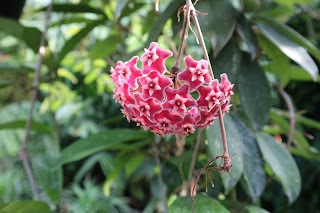






























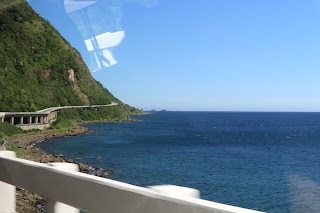

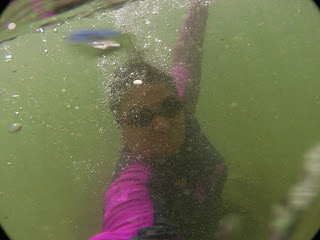

























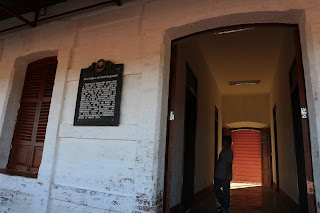
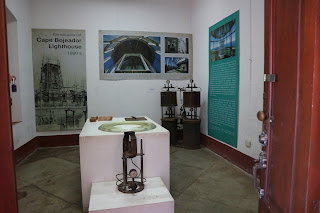









No comments:
Post a Comment
Thanks for reading. Hope your feet got itchy to try this place. Feel free to express that though you have there I would love to hear from you...